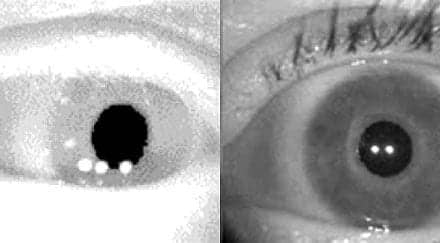The accelerating pace of general chip innovation could have a major impact on hearing aids compared to specialty chips.
Innovation in hearing aid technology has compounded over recent years. Like many other devices, such as iPhones, supercomputers, and even cars and farming equipment, this rapid innovation starts with a core feature, the chip.
What do hearing aid chips do inside a device?
For many years, hearing devices have relied on specialized chips to power sound processing and ear-to-ear connection. To understand why chips play such an important role in advancing hearing aid technology, it’s crucial to understand the role a chip plays inside the device.
Chips are responsible for the sound processing in the device. They first capture and amplify the sound, making any incoming noises louder. After capturing the sound, they also filter out background noise and other unwanted sounds for a clear and crisp intake for the user. Additionally, the chips inside hearing aids may be used to process and analyze the sounds that are being picked up by the device in order to provide a more natural and accurate representation of the sounds being heard.
More advanced chips may also be used to control the directionality of the hearing aid, allowing the user to focus on a specific sound or direction. They can also assist in ear-to-ear connection, mimicking the interconnectedness of the auditory canals that allow both ears to interact with one another.
Specialized chips and their historical role in hearing aids
Hearing aids have traditionally used specialized chips for a number of reasons. First, the technology used in hearing aids is highly specialized and requires a high degree of precision in order to function properly and meet the unique demands. They require sensitive technology that can process real-time sound information in order to achieve efficient, high-quality sound processing.
Additionally, hearing aids are often small and compact, which means that the chips used in them must be small and low-power in order to fit inside the device without compromising its performance. Finally, hearing aids are often used in environments where background noise can be a major issue, so the specialized chips used in them are designed to be highly sensitive and able to filter out unwanted sounds. Customized chips used in traditional hearing aids have been designed with specific algorithms to meet these requirements. Hearing aids built on custom chips can be compared to Nokia phones before the iPhone era. While specialized chips and Nokia phones functioned, there was room to innovate, which is how general chips became the next innovation in hearing device technology.
The case for general purpose chips
General-purpose chips, such as those used in computers and smartphones, are subject to rapid technological change and evolution. The development of these chips is driven by the need for faster, more powerful, and more energy-efficient processing, and this has led to a rapid pace of innovation in the field. As a result, the iteration cycle of these chips is often quite short, with new generations of chips being released every six to 12 months, often with new features that benefit end users.
General chips are often used in devices that require high performance or low power consumption. This technology is used across several industries that have innovated or drastically changed because of AI or general chips. Some examples include:
Self-driving cars: AI-powered chips are helping to make self-driving cars a reality. These chips are used to process an extensive amount of data that self-driving cars need to navigate safely. They are also becoming increasingly miniaturized so that they can be used in smaller devices.
Smartphones: Smartphones are one of the most popular applications for AI chips. They are used for tasks like facial recognition and object identification, and are also becoming increasingly common in mid-range and even entry-level phones.
IoT devices: The Internet of Things is another area where AI chips are starting to make an impact. These tiny chips can be used in everything from smart thermostats to security cameras, and are helping to make our homes and offices more connected than ever before.
The aforementioned devices have proven general chips are a reliable option for hearing devices, but some companies are still caught up on minor pain points that have made the transition from specialized chips to general chips slower in comparison to other industries.
What is holding hearing aid companies back from using general chips?
There are two major pain points that have held up industry adoption of general chips: power efficiency and path dependence.
Specialized chips that are designed specifically for use in hearing aids are often optimized for power efficiency. They may use low-power design techniques, such as clock gating and power gating, to reduce their energy consumption and extend the battery life of the hearing aid. In contrast, general-purpose chips that are used in smartphones and other consumer electronics may not be as optimized for power efficiency, and they may require more frequent battery changes in a hearing aid.
Hearing aid companies are path dependent on custom chips. That is, they have invested heavily in developing products based on custom chips that are specific to their needs. As a result, it is difficult for hearing aid companies to shift to using general-purpose chips quickly. They’ve invested heavily on teams, equipment, software, and factories. The internal resistance to change would be tremendous. While the move to general-purpose chips may offer some benefits, it is likely to be a slow and gradual process for many companies.
Processing power and advanced algorithms
General chips and the fast paced innovation cycle means hearing aids of the future could have 20 to 100 times the processing power of current devices on the market. The major challenge that hearing aids have yet to solve is the ability to extract human voices with low latency and high quality in complex, dynamic environments. This is necessary for individuals with hearing impairments to understand speech in noisy or crowded environments.
To solve this problem, hearing aids require strong computational power and very dynamic calculations to keep up with the latest research in the field of deep learning. This can only be achieved through the use of general-purpose chips and AIPU (Artificial Intelligence Processing Unit). AIPU is a type of computer hardware that is designed to handle complex tasks such as natural language processing and image recognition. It is not directly related to hearing aids, but it could potentially be used to boost the computing power of hearing aids. Thus enabling them to effectively process complex and dynamic sound environments.
Currently, general-purpose chips only have the ability to achieve 70 out of 100 of the desired outcomes, while custom chips only score 60 out of 100. But with the maturity of deep learning and the continued advancement in chip manufacturing processes, AIPU is able to improve the computing power of hearing aids, making it possible to finally realize the sound processing of dynamic and complex environments through deep learning. This technology has the potential to greatly enhance the capabilities of hearing aids, providing users with a significantly improved sound experience and a better quality of life.
Algorithms will also play a preeminent role in the shift from specialized to general chips. Instead of starting with a custom chip and determining the functions it can support, companies using general chips can begin by identifying the features they want the hearing device to have, such as noise reduction and Bluetooth connectivity. For example, Orka’s approach to hearing aid development differs from the typical process which involves starting with a custom chip, such as ON Semiconductor’s EZAIRO series, and determining its supported functions. From there, they can develop the chips and parts that can support these features. When, in many cases, companies find shortcomings in existing solutions, general chips will give them the flexibility to develop algorithms to produce these features.
For companies using custom chips, they can simply use the pre-existing algorithms on the chip without much adjustment, as there is not much room for changing to more advanced features. This makes their development and production process relatively simple. However, specific, desired algorithms that advance hearing devices, such as noise reduction, cannot be deployed on a custom chip. This means by going the general chip route, manufacturers may have to write all the basic algorithms themselves, go through the process of debugging, validation, clinical testing, and more, but in the end it allows them complete control of all the necessary algorithms and integrates and optimizes unique features for a more sophisticated device. It also gives companies the confidence to continue combining software and hardware in unique ways that innovate beyond features that are already offered in hearing devices on the market.
Advancements of general chips in hearing health devices
General chips are all about optimizing the combination of software and hardware through unique and advanced algorithms that drive innovation in hearing health devices. Orka is currently working on a general chip hearing device that will launch in 2023 leveraging unique algorithms to improve processing and computation power along with connectivity capabilities.
While the hearing health industry is still working toward adoption of general chips, the device advancements in both processing and computation power, and unique AI features, show why general chips are the next innovative advancement in hearing device technology. Industry adoption may take time, but the use of general-purpose chips will certainly become more of a norm in the hearing care world. HR

Ben Sun is the CEO and co-founder of Orka, an innovative global hearing technology company born out of a passion and commitment to address hearing loss. Prior to Orka, Sun was a hardware engineer at Apple, where he participated in the hardware design, supply chain, and process control of micro-interactive products such as the first-generation Apple Pencil and butterfly keyboard.





